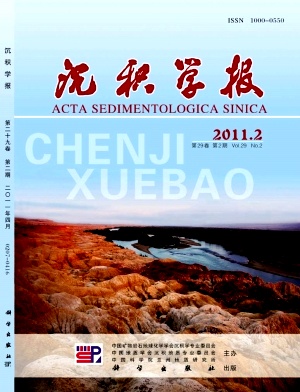Restoration of Paleoclimate and Its Geological Significance: As an example from Upper Triassic Xujiahe Formation in Sichuan Basin
- Received Date: 1900-01-01
- Rev Recd Date: 1900-01-01
- Publish Date: 2011-04-10
-
Key words:
- Xujiahe stage /
- paleoclimate /
- sporopollen /
- elements /
- GR curve /
- sandwichlike structure
Abstract: Upper Triassic Xujiahe Formation in Sichuan Basin is the principal producing formation. Six members of Xujiahe Formation form sandwichlike sedimentation structure with interbeded sandstone and mudstone. In order to discuss the contribution of paleoclimate on this kind of sedimentation structure, three commonlyused methods of restoring paleoclimate, namely sporopollen, elements and GRray logging were used to restore the paleoclimate of the time when each member of Xujiahe Formation was deposited. 78 genera of sporopollen were found in the samples of Xujiahe Formation, forming the sporopollen combination of DictyophylliditesConcavisporitesCycadopites. The combination indicates warm and humid climate in tropic and/or subtropic zone. The ratio of Ca/Mg has a positive correlation with paleotemperature while the ratio of Sr/Ba has a negative correlation with salinity(paleomoisture). The Gamma Ray can also illustrate the change of paleoclimate. The high GR data indicate humid climate, and vice versa. The proofs from sporopollen provided the climate background, and the other two methods described the details of paleoclimate. Combined all the three methods, we can find that the paleoclimate when Xujiahe Formation was sediment belongs to warmhumid tropicssubtropics zone. Paleoclimate when T3x1, T3x3 and T3x5 were formed showed hot and humid. In the meantime, when T3x2, T3x4 and T3x6 were formed it was warm and relatively dry. The climate of T3x5 was outstanding hot and humid, while the temperature and moisture of T3x2 was lowest. Controlled by the regular changes of paleoclimate, even numbered members were dominated by mudstone, and odd numbered members were dominated by sandstones. This kind of sandwichlike sedimentation structure formed by alternating layers of mudstone and sandstone provided favorite conditions for the formation of hydrocarbon reservoirs.
| Citation: | XU Zhaohui. Restoration of Paleoclimate and Its Geological Significance: As an example from Upper Triassic Xujiahe Formation in Sichuan Basin[J]. Acta Sedimentologica Sinica, 2011, 29(2): 235-244. |






 DownLoad:
DownLoad: